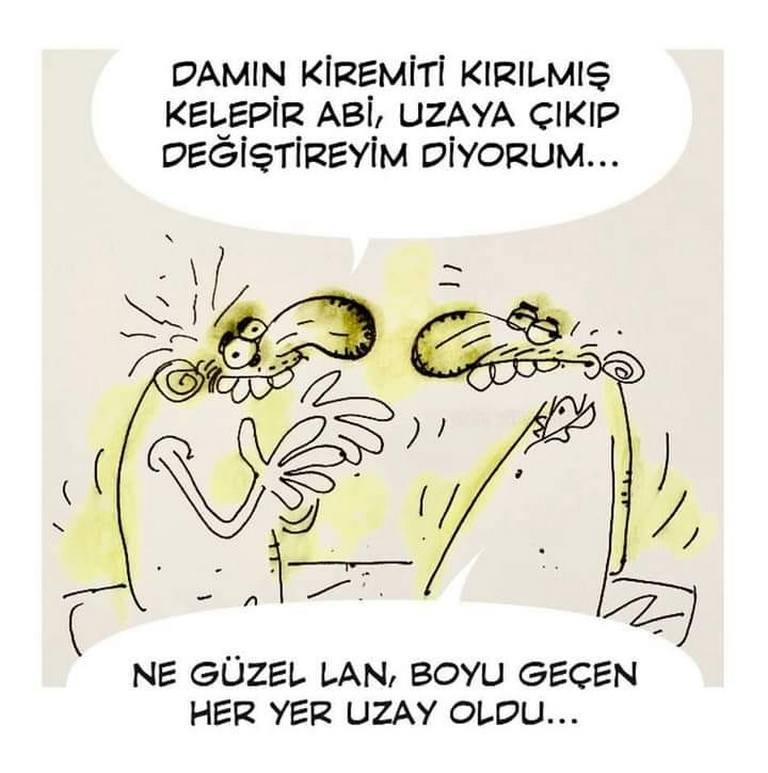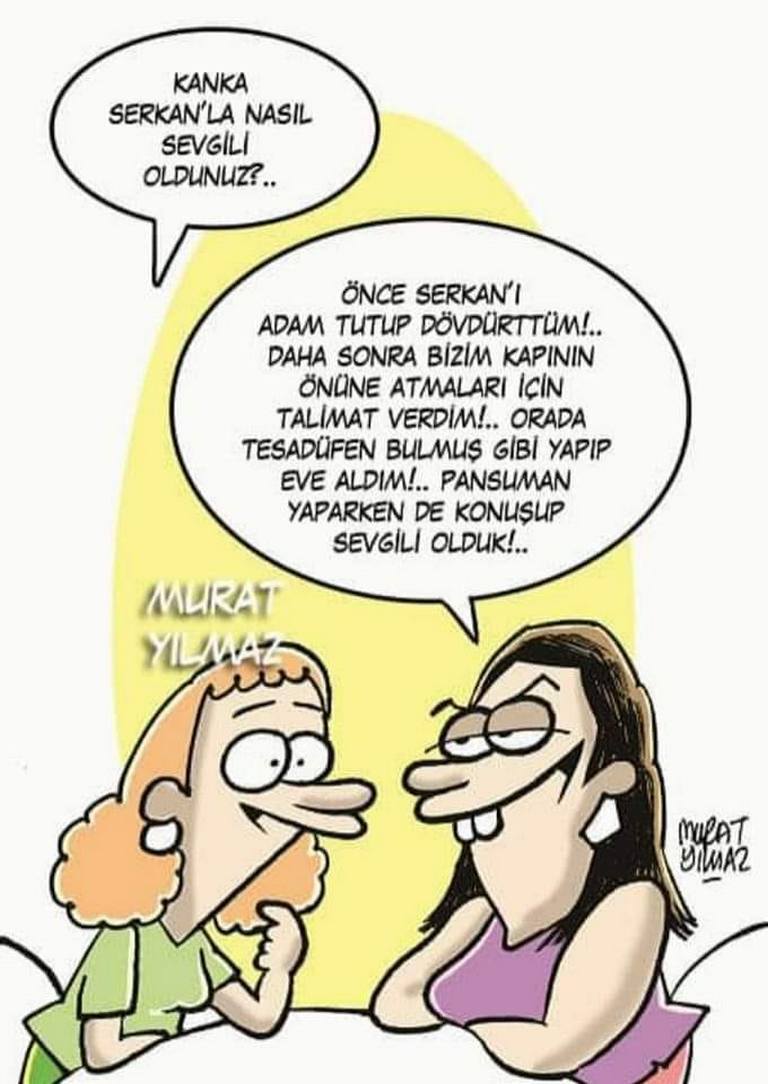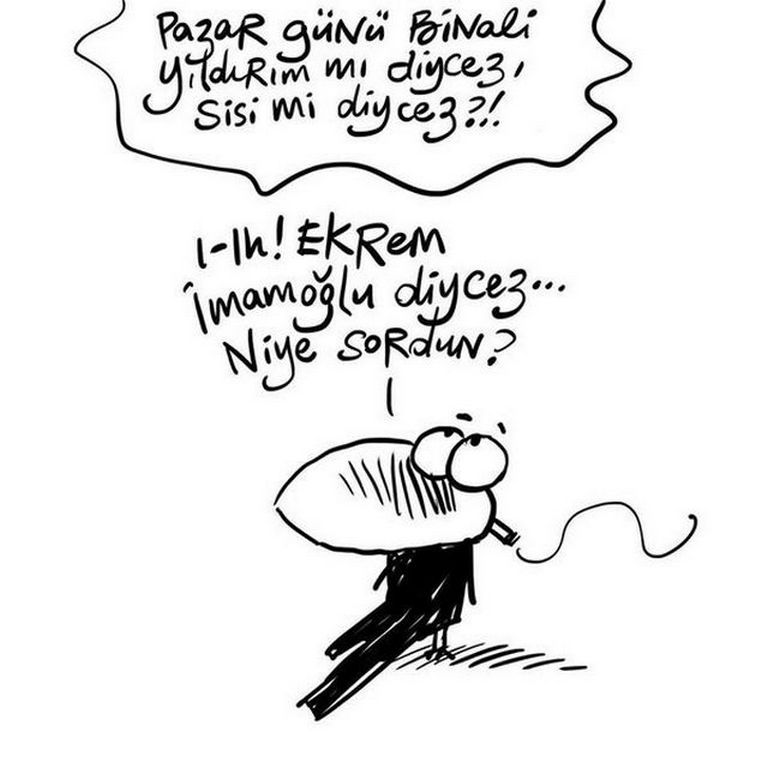SÜMERLER TÜRK MÜ?
Merhabalar, Bilig Academia'ya hoş geldiniz! Bu videoda, Sümerce-Türkçe ilişkisi hakkında konuştuk. Bilindiği üzere birçok dünya dilinin dilbilimsel araştırma sahası veriler ile sürekli bir gelişme içerisindedir. Türkçe de yapılan bilimsel çalışmalarda Mezopotamya uygarlıkları ile etkileşime geçtiğimi düşünülen ve daha sonra da bilimsel olarak ispatlanan dünya halkları arasındadır.
Were the Sumerians Turks? Did they speak Turkish? Were the Sumerians a branch of the Turks? Or were the Turks Sumerian? Let's talk about this scientifically.
Hello, welcome to Bilig Academia, I'm Emrecan. With you today, We will go back to the 4000s and try to explain the relationship between Sumerian and Turkish in all its details. But I want to make a warning before going into the video: In this video, you can often hear terminological expressions related to linguistics in order to explain the issue scientifically. I will try to write which expression corresponds to what at the bottom of the video where I think it is necessary for you to understand better. Another caveat is about the depth of the subject. In order to remain faithful to our thesis, we will generally try to explain the issue with linguistic information. We will make use of other areas as much as necessary. So this is not a history video. I will also add a bibliography to the video description for further reading. This content consists of four main parts: the history of researching the relationship between Sumerian and Turkish, the relationship between Sumerian and Turkish, comparative examples and conclusion. Now, without wasting any more time, let's get to the video. According to Helmut Uhlig and Gebhard Selz, the Sumerians were not the indigenous people of Mesopotamia, but settled here in the BC. It came from outside around 3500 BC.
However, it is not known exactly where they came from in Mesopotamia. Many opinions have been put forward by scientists in this regard. The strongest among these is the view that, according to İlhami Durmuş, the Sumerians came to Mesopotamia from around the Aral Sea, that is, from Central Asia. Scholars with this view concluded that the Sumerians could be one of the ancient Turkish communities or a tribe related to the Turks.
Osman Nedim Tuna received a book called Eti Dili Sözlüğü while he was a student at Istanbul University, Department of Turcology in 1947-48. While examining the book, the Sumerian word "Gud" (ox, cattle) suddenly catches his eye. Because this word is used as "Ud" in the period we call Old Turkish. Based on this similarity, Tuna said, "If this is not a coincidence but due to a historical relationship between the Sumerian and Turkish languages, then the Sumerian word-head g's should correspond to the zero morpheme () in Turkish. As it is known, there is no g phoneme at the beginning of a word in Old Turkish. If [these inferences] are correct…
The possibility of coincidence with other Turkish words must be logically possible." Tuna begins to make further readings on Sumerian and "Sm. home> ET. finds other examples, such as "work".
Thus, he created the first regular sound correspondence in 1947.
Tuna, in 1962, at the University of Washington, Prof. He started his doctorate in Turcology, Mongolistics, Altaicism and Linguistics under Nicholas Poppe and completed his doctorate in 1969. During this period, he discovers the law of secondary and tertiary sound equivalences about the similarity of the "d" and "n" phonemes in Sumerian to Turkish, one after the other. On April 6, 1971, the 181st congress of the American Oriental Society, of which Osman Nedim Tuna is a member, was held at Harvard University. Turcologists and historians such as Erica Reiner (Chicago), Herbert Paper (Michigan), O. Pritsak (Harward), Denis Sinor (Indiana), Şinasi Tekin (Harward), Fahri İz (Chicago) and Halil İnalcık (Philadelphia) attend the meeting. Tuna shares her findings with the other members at this meeting and is greatly appreciated.
Osman Nedim Tuna, in 1973, requested a meeting from Turkologist Ahmet Temir, the Head of the Turkish Culture Research Institute at the time, by talking about his work, and upon his own request, Sümerologist Emin Bilgiç (DTCF), Old West Turkish expert Hasan Eren (DTCF), Sinology expert.
Bahaeddin Ögel (DTCF) and Mongolist-Altayist expert Ahmet Temir (DTCF). Thus, for the first time, Tuna brings together the experts of both languages and consults on the subject. On April 9, 1974, experts in Near, Middle, and Far Eastern languages, such as Indo-European linguists George Cardona and Henry Hoenigswald, Comparative Native Americans John Faught, Sumerologist Ake Sjöberg, and Assyriologist Earl Leichty, held a meeting at the University of Pennsylvania.. In all these meetings, the relations between Sumerian and Turkish language are evaluated in detail.
In these meetings, where more than 200 comparisons were made, no objections are made to any word other than the word "sipad" put forward by Pritsak. The relation of all of them with Turkish is accepted as scientific. Denis Sinor says that this work of Tuna should be published as soon as possible and the work is evaluated as error-free. The first thought put forward in such comparisons is whether there is a coincidence. Mathematics is the best way to understand this.
According to the calculations published in Osman Nedim Tuna's article titled The Historical Relevance of the Sumerian and Turkish Languages and the Issue of the Age of the Turkish Language, it only takes a miracle for chance words to be so similar to each other in these two world languages, which do not have much to do with each other.
Again, according to Tuna's statements, it is necessary to determine the minimum number of similar pairs sufficient to prove a historical relationship between the two languages. According to Cowan, Greenberg and Bender, only an equivalence from two to seven proves the historical relationship of the two languages, provided that the CVC (Consonant+vowel+consonant) rule is followed. The number of equivalences Osman Nedim Tuna has achieved is 165. Therefore, it is mathematically impossible for the Turkish words in Sumerian to be a coincidence. But the most difficult thing, even the impossible in terms of coincidence, is the compound words that have the same meaning in both languages and are made from two different words according to the grammatical rules of Turkish. Another important point to note is that both the Turkic (rl) era, which is the sole successor of Chuvash Turkish, and (z-ş), represented by Turkish dialects such as Oguz, Karluk and Kipchak today, are both seen in Turkish words in Sumerian. This shows that Sumerian interacted with Turkish at a time when it witnessed the phonetic transition of Turkish.
Apart from the words, there are interesting similarities between Turkish and Sumerian in some suffixes: For example, the suffixes of separation, orientation, direction and equality in Sumerian are almost the same with the Turkish of the Köktürk period, except for a slight phoneme difference.
Based on the information we received from Osman Nedim Tuna, we can conclude as follows: 1. Sumerian and Turkish may or may not have been related to each other in a much older period, this issue does not concern us. However, it has been scientifically proven that there is a linguistic relationship between the Sumerians and the Turks, with 168 words being Turkish. 2. The existence of the Turkish language 5500 years ago has been seen concretely. Especially the fact that this period corresponds to the phonetic transition period of Turkish (rl/z-ş), takes the historical age of Turkish even further. According to the research conducted by Osman Nedim Tuna in 1983, the history of Turkish should correspond to at least 8 thousand years ago. 3. The language that has the oldest written documents among the languages living today is the Turkish language. The oldest of these are the words taken from Turkish on the Sumerian tablets, which we describe in this video. 4. According to Ahmet Bican Ercilasun, another modern language whose ties with Sumerian was discovered later is Hungarian. It should not be forgotten that Hungarian is also a Uralic language and originates from Central Asia. Yes, it is tiring but I think it is an important video as I hope it will end the popular debates going on today.
If you like the video, don't forget to press the like button, turn on the notification bell to be informed about the developments, and subscribe if you haven't subscribed to the channel yet. I would like to end the video with the "Last Word" in Osman Nedim Tuna's book, The Historical Relevance of Sumerian and Turkish Languages and the Issue of the Age of Turkish Language. See you in the next video, stay with science.
"The Sumerian language and the Turkish language were compared by many. Except for B. Munkacsi, none of them was prepared for the Turkish language.(…) [regular sound laws] were first used by me in 1947 in this regard. I started this work by accident: I gave my first lecture on these in 1970, and in 1982 I completed my work by finding the answer to the last question I could imagine would be asked of me. I have not given all of my material. I outlined the issue. The point that I paid the most attention during my work was the idea of being able to get rid of my Turkishness from the subject. I believe I can achieve this.
I had no prejudices and my goal was simply to establish the truth. I don't doubt that I succeeded.
Because I know that I am better prepared than anyone who has ever dealt with such a subject.
However, I am a Turkologist, Mongolist, Altaistist and Lengüist, not a Sumerologist. I record this as a fact, without hiding behind false modesty.
In this respect, I cannot be held responsible for the correctness or inaccuracy of the Sumerian words. Each of these is given exactly as the Sumerologists themselves determined. Now the meaning and form of some of them may have changed as a result of the development of Sumerology. Despite all my checks, if there are such ones, it probably won't be 15 words. Even if we double that, there are still 138 words left, which the sound I give is not enough to break the equivalence laws. Because, it means that more than 8 support examples will remain for each law. This is more than twice the desired amount. However, I cannot be sure that my possible opponents, especially the Sumerologists, will show my efforts to dispel any bias that may arise from my own nationality. If they are to raise objections, they must consider all the words I have given—since the truth cannot be established any other way. If there is a mistake, it should be attested not by personal authority, but by a written source, in the same language and form, as I have done even for words of Turkish origin. On all the remaining points, I can defend my conclusions, no matter who the question comes from."
Osman Nedim Tuna, 07.03.1989.
===================
Merhabalar, Bilig Academia'ya hoş geldiniz! Bu videoda, Sümerce-Türkçe ilişkisi hakkında konuştuk. Bilindiği üzere birçok dünya dilinin dilbilimsel araştırma sahası veriler ile sürekli bir gelişme içerisindedir. Türkçe de yapılan bilimsel çalışmalarda Mezopotamya uygarlıkları ile etkileşime geçtiğimi düşünülen ve daha sonra da bilimsel olarak ispatlanan dünya halkları arasındadır.
KAYNAKÇA
1. Ahmet Bican Ercilasun. "Sümerce-Türkçe İlişkisi: Türk Dil Kurumu Kütüphanesinde İki Kitap". Türk Dili. Y. 70, S. 840, 2021, s. 4-11.
2. Helmut Uhlig. Sümerler: Mezapotamya'nın Sıradışı Topluluğu. (Çev. Nilgün Ersoy). İstanbul: Totem Yayınları, 2019, s. 12, 14-17, 56.
3. İlhami Durmuş. "Sumerlilerin Kökeni ve Kültürü". Akademik Tarih ve Düşünce Dergisi Academic Journal of History and Idea. C. 5, S. 17, 2018, s. 177-200.
4. Gebhard J. Selz. Sümerler ve Akadlar: Tarih, Toplum, Kültür. İstanbul: Alfa Yayınları, 2015, s. 27, 33, 119, 128.
5. Gürkan Gökçek ve Oğuzhan Arabacı. "Sumer ve Türk Dilleri Arasındaki Söz Dizimi ve Bazı Eklerin Benzerlikleri Üzerine Bir Değerlendirme". Akademik Tarih ve Düşünce Dergisi Academic Journal of History and Idea. C. 5, S. 17, 2018, s. 231-253.
6. Murat Yordakök. "Sümerce'deki Türkçe tıbbi sözcükler". Çocuk Sağlığı ve Hastalıkları Dergisi. C. 49, S. 1, 2006, s. 76-77.
7. Samuel Noah Kramer. Sümerliler: Tarihleri, Kültürleri ve Karakterleri. (Çev. Özcan Buze). İstanbul: Kabalcı Yayınevi, 2002, s. 401.
8. Osman Nedim Tuna. Sümer ve Türk Dillerinin Tarihî İlgisi ile Türk Dilinin Yaşı Meselesi. Ankara: Türk Dil Kurumu Yayınları, 2020.
İLERİ OKUMA İÇİN EK KAYNAKLAR
1. Ali Narçın. A'dan Z'ye Sümer. İstanbul: Ozan Yayıncılık, 2007.
2. Arif Tekin. Sumerler'den İslam'a Kutsal Kitaplar ve Dinler. İstanbul: Berfin Yayınları, 2019.
3. Jean Bottero (Der.). Eski Yakındoğu: Sümer'den Kutsal Kitap'a. (Çev. Adnan Kâhiloğulları, Pınar Güzelyürek ve Lale Arslan Özcan). Ankara: Dost Yayınları, 2005.
4. Rahmi Maltaş. Sümerlerden Günümüze Eğitim: İlk ve Ortaçağ. Konya: Çizgi Kitabevi Yayınları, 2011.
5. Samuel Noah Kramer. Sümer Mitolojisi. (Çev. Hamide Koyukan). İstanbul: Kabalcı Yayınevi, 1999.
/biligacademia
- - - - - - - - - - - - - - - -
Yuvanda sicak bir ortam yaratmak icin elinden geleni yap.
~Anonim Nasihat~
- - - - - - - - - - - - - - - -
Sen Bir Ceylan Olsan
Sen bir ceylan olsan ben de avcı
Avlasam çöllerde saz ile seni
Bulunmaz dermanı yoktur ilacı
Vursam yaralasam söz ile seni.
Kurulma sevdiğim gözelim deyin
Bağlanma karayı alları geyin
Ben bir çoban olsam sen de bir koyun
Beslesem elimde tuz ile seni.
Koyun olsan otlatırdım yaylada
Tellerini yoldurmazdım hoyrada
Balık olsan takla dönsen deryada
Düşersem toruma hız ile seni.
Veysel der ismini koymam dilimden
Ayrı düştüm vatanımdan ilimden
Kuş olsan da kurtulmazdın elimden
Eğer görsem idi göz ile seni.
~Aşık Veysel~
- - - - - - - - - - - - - - - -
Yapılan hizmetler, yapılması gereken ve yapılabilecek hizmetlerin yüzde biri bile değil.
Fakirlere yedirilen yemekler dışındaki iftar ziyafetlerini önemli ve temel bir hizmet olarak görmek mümkün müdür?
Hele sofralarda israf varsa, günah kazanılmış oluyor.
~Mehmet Şevket Eygi
Mürtecilerin çok sevdiği ve önemsediği fikir adamı.~
- - - - - - - - - - - - - - - -
Başkaları Senin Sırrını Açıklamasını İstemiyorsan, Sen Kendi Sırrını Açıklama.
~SENACA~
- - - - - - - - - - - - - - - -
Dohtur Bey!
~Verdiğin perhize budur gayratım,
Bundan başka uyameyom dohtur bey!
Üç sepet yumurta sabah kahvaltım,
Teker teker sayameyom dohtur bey!
İki leğen pilav bir yayık ayran,
İster yağlı olsun isterse yavan,
Yanına kesiyom beş kilo sovan,
Yeyom yeyom doyameyom dohtur bey!
Üç tencere bamya yerim ben şinci,
Yirmi tas su içip biraz koşinci,
Her yanım sökülür karnım şişinci,
Sağlam göynek giyemeyom dohtur bey!
Şinciye acımdan çoktan ölürdüm,
Sağolsun komşular gönderir dürüm,
Bir guzudan çok yiyemem, var sözüm,
Ayıp olur cayameyom dohtur bey!
Bazı az geliyo beş kasa hurma,
Yedi lahanadan yapıyoz sarma,
Onuda mı yedin diye hiç sorma,
Utanıyom deyemeyom dohtur bey!
Günde iki çuval unum gidiyo,
Avradım her sabah ekmek ediyo,
Bir gazen fasilye gönül ye deyo,
Artırmaya gıyameyom dohtur bey!
Senede gırk dönüm bostan ekerim,
Benden başka kimse yemesin derim,
Gavunu, garpuzu gabuklu yerim,
Aceleden soyameyom dohtur bey!
Bilmem bu işin sonu nereye gider,
Buyumuş gısmetim, buyumuş gader,
Bir günde yediğim işte bu gader,
Daha fazla yiyemeyom dohtur bey
Yazarı bilinmiyor.~
- - - - - - - - - - - - - - - -
Osmanli Hukumeti Ermenilere toprak verilmesini kabul ediyor.
~Hariciye Naziri Sefa Bey - 29.01.1921
Ingiliz Yuksek Komiseri Rumbolda..~
- - - - - - - - - - - - - - - -
Hayat ne bayram ne de yas gunudur.
Hayat sadece bir is gunudur.
~Alexsandre Vinet~
- - - - - - - - - - - - - - - -
Yaşam sanatı kendini sürekli olarak etrafındakilere adapte etmektir.
~Kazuko Okokaura~
. - . - . - . - . - . -










413.477 kb Bernard_Lewis-Islamin_Krizi-libre.pdf
3.298.594 kb Donald_Margulies-Dostlarla_Aksam_Yemegi.pdf
342.695 kb Veda_Yemegi-Michel_Tournier.epub
236.027 kb TABUTTAN_GELEN-Mason_Oldugum_Donemde_Yasadiklarim.epub
209.198 kb Ravenloft_7-P._N._Elrod-Ben_Strahd._Bir_Vampirin_Anilari.epub
307.158 kb Ferhan_Sensoy-Sahlari_da_Vururlar.pdf
301.301 kb Ken_MacLeod-Gece_Oturumlari.epub
224.877 kb Resat_Nuri_Guntekin-Kizilcik_Dallari.epub
118.739 kb osho_ozgurluk.epub
564.055 kb Murathan_Mungan-Uc_Aynali_Kirk_Oda.mobi
92.616 kb A_Murder_Is_Announced-Agatha_Christie.epub
361.798 kb Virginia_Woolf-Kendine_Ait_Bir_Oda.pdf
181.167 kb Steve_Silverman-Einsteinin_Buzdolabi.epub
5.509.211 kb Tarih_Yaprak_Test-Aci_Tes-B2.pdf
369.375 kb Alper_Sedat_Aslandas-Baskin_Bicakci_Populer_Siyasi_Deyimler_Sozlugu.epub
1.335.259 kb Pablo_Neruda-Siirler.pdf
320.563 kb Resad_Ekrem_Kocu-Kizlaragasinin_Pici.epub
4.569.397 kb Metin_And-Baslangictan_1983_e_Turk_Tiyatro_Tarihi.pdf
211.732 kb Bulent_Koltukcu-acilservis.pdf
369.639 kb David_Eddings-Belgariad_5_Efsuncunun_Son_Oyunu.epub
Muhalafetteyken atıp tutmak ne kadar rahat değil mi?
06
Tarikat lideri: 1986'daki uzay mekiğini biz düşürdük Nakşibendi lideri Şeyh Ahmet Yasin Bursevi, 1986'da kalkışından dakikalar sonra infilak eden ABD'ye ait Challenger uzay mekiğini kendilerinin düşürdüğünü iddia etti.
Nakşibendilerin lideri Şeyh Nazım Kıbrisi öldükten sonra yerine Şeyh Ahmet Yasin Bursevi geçti.
29
72
Özlem Zengin: "Selahattin Demirtaş'ın Öcalan'ın metnini birkaç kez okuyup kendine rehber edinmesi ve onu örnek alması lazım."
(2015)
30
- - - - - - - - - - - - -
a45UyF587661
- - - - - - - - - - - - -
| Grup eposta komutlari ve adresleri | : | |
| Gruba mesaj gondermek icin | : | ozgur-gundem@googlegroups.com |
| Gruba uye olmak icin | : | ozgur-gundem+subscribe@googlegroups.com |
| Grup kurucusuna yazmak icin | : | 0raj.p0yraz@neomailbox.net / oraj.poyraz@openmail.cc |
| Grup Sayfamiz | : | https://groups.google.com/g/ozgur-gundem/ |
| Arzu ederseniz bloguma da goz atabilirsiniz | : | http://orajpoyraz.blogspot.com/ |
 Özgürlük adam, henüz yeni kurdum. Özgürlük adam, henüz yeni kurdum.Siyasi iktidarın sürekli yasakladığı, polisiye önlemler ile gizlemeye çalıştığı şeyleri burada biriktireceğim. Videolar, resimler, makaleler falan. | : | http://insulaelibertatis.com/ |
| Eposta adresleri (Derdiniz varsa buradan ulaşın.) | : | 0raj.p0yraz@neomailbox.net oraj.poyraz@openmail.cc HvLWPtIjJR8X@protonmail.com 0PjukdvspdUh@mail2tor.com |
| Tor ağı üzerindeki web siteleri Darkweb diye bilinir, TorBrowser kullancaksınız. | : | http://45m2jpfwn6ydfrqyhw5jbqszyip45pvi6m2cyo3722wyhur6yuitgbyd.onion/ http://kbq4ghhydumvhgvwkccbad5g7ae2yho6a4llxuy2z4oa6dox6gjtngad.onion/ |
Hiç yorum yok:
Yorum Gönder